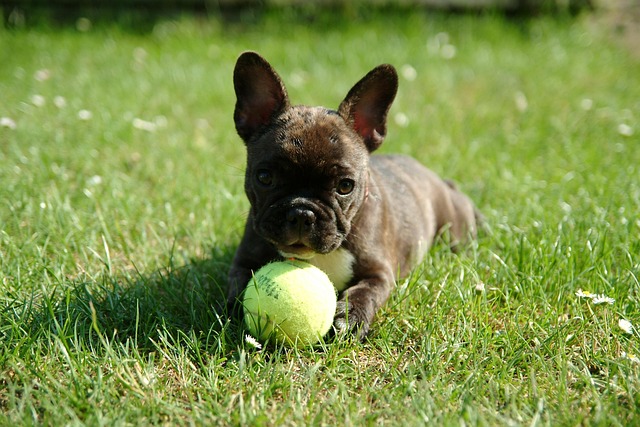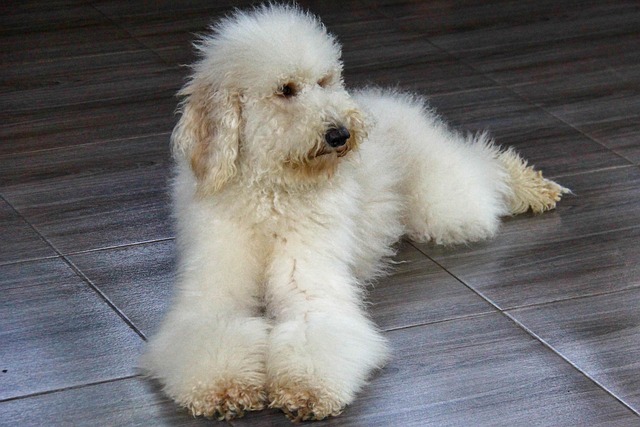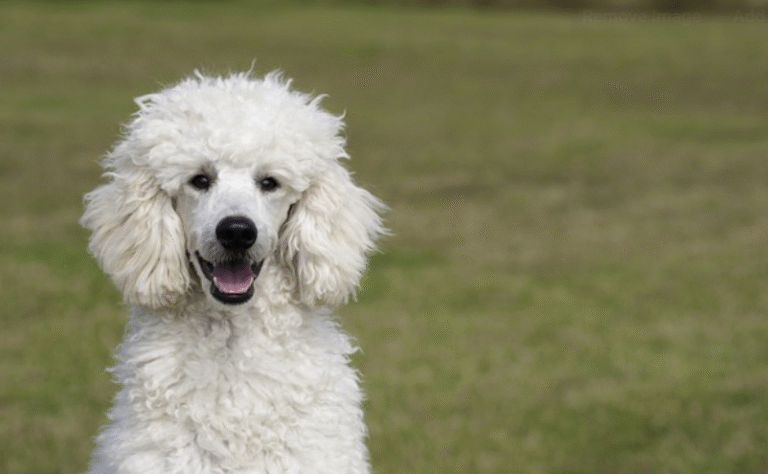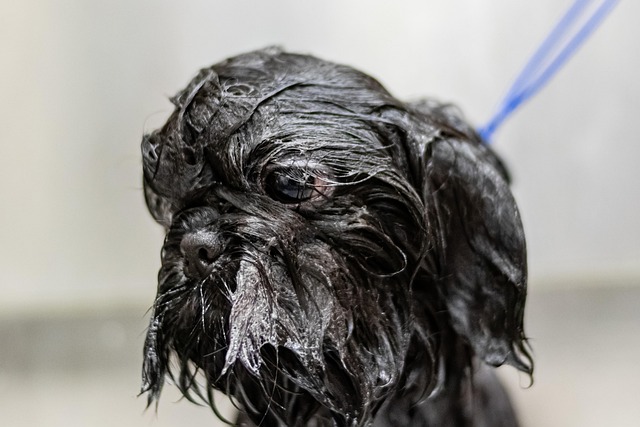Silver poodle puppies are adorable little poodles characterized by their distinct, silver-colored coat. Their unique color and plush fluffiness are what sets them apart! Because of their hypoallergenic hair, in the United States, breeders often select silver poodles.
Their docile disposition teamed with a sharp intellect contributes to their popularity among families and the ring. These babies are born jet black! When they mature, their coats continue to fade—an easily recognizable characteristic of the breed.
Silver poodles come in all sizes, ranging from toy, miniature, to standard. This diversity allows owners to select the best match for their homes and lifestyles. We’ll explain all of that in depth in the following sections.
We’ll be discussing the selection, care, and training of silver poodle puppies in an American context.
What Makes Silver Poodles Unique?

Silver poodles are unique for more than their exceptional beauty. Their glinting grey coat, intelligence and calm temperament make them unique among the other poodle colors. Below, we explain what makes these dogs unique in looks and temperament, alike.
1. The Shimmering Silver Coat Genetics
Silver poodles emit their beautiful color due to a recessive gene called the silvering gene. Unlike other poodle colors, such as black or blue poodles, the silver coat is actually born a solid black.
With time, the gene gradually lightens the color into a radiant silver. Responsible breeders will work to breed poodles with healthy lines and consistently breed poodles from strong silver lines to preserve this uncommon color.
Below is a table showing how the gene works across generations:
| Parent 1 (Gene) | Parent 2 (Gene) | Chance of Silver Puppy |
|---|---|---|
| Silver | Silver | High |
| Silver | Black | Medium |
| Black | Black | Low |
2. Born Dark, Bloom Silver Later
Silver poodle puppies are born black. At six weeks, pale roots around eyes and toes indicate that silver is on the way.
The coat continues to transition for around a year and a half. Keeping an eye on this transition provides valuable guidance for breeders and owners to set appropriate expectations.
3. Their Intelligent, Gentle Temperament
Silver poodles are fast learners and are more than happy to do what you ask. They form tight attachments to humans, require companionship, and respond best to firm but kind direction.
Early socialization ensures their happy disposition, truly making them the ideal family pet.
4. Health Quirks of Silver Pups
Not surprisingly, silver poodles are more likely than other colors to experience skin or coat problems. Regular vet visits will help to catch any issues before they become serious.
Thoughtful breeding reduces these risks and helps ensure the breed’s health.
5. More Than Just a Color
Poodles originally were water dogs in Europe. In Japan, silver coats became known for their beauty, charm, and charisma.
Even today, their appearance and character are highly sought after, as they represent significant milestones in terms of breed development.
Silver Poodle History Unveiled

Silver poodles have a unique tale interwoven with the expansive and colorful history of the poodle breed. Poodles originally gained prominence in Europe as waterfowl hunting companions. They were highly valued for their ability to retrieve from water and their high intelligence.
Eventually, these dogs found their way into countless households, treasured for their fidelity and good nature. There are three sizes of poodles – standard, miniature, and toy. They all had the same ancestral origins, but each developed to fulfill varying requirements and focused breeding standards.
Silver poodles, characterized by their unique coat color, can be traced almost exclusively to miniature poodles. The toy poodle inherited the silver from the miniature line much later. What an amazing example of traits saved and lost moving across generations!
Notable ancestors in the poodle family include:
- Gamin de la Giraffe (standard poodle, 1930s)
- Nunsoe Duc de la Terrace (standard poodle, 1930s)
- Blakeen Beau (early champion)
- Carillon Courage (silver poodle, 1960s)
- Tiopepi Silver Dollar (influential in silver lines)
How Breeding Decisions Shaped Silver Poodles
Early breeders bred on for looks and character, adopting intellect, coat quality, and uniqueness in color. The silver coat is the result of a recessive gene associated with a mutation on the melanophilin (MLPH) gene. Silver puppies are born black, their faces and paws clearing by about six weeks of age.
This reflects the color change across a full coat, which can take nearly two years to complete fading. In order to breed them, both parents need to be carriers of the dilution gene. This requirement complicates the whole process, which is why genetic testing is vital for today’s breeders.
Tracing Poodle Ancestry
The silver gene’s discovery helped us learn a great deal about poodle genetics. Due to the recessive nature of the gene, both parents must carry it, causing silver poodles to be relatively uncommon. Responsible breeders use genetic tests to identify silver carriers and avoid unplanned matings.
This prevents the coat color from fading and ensures it continues to conform to breed standards. It is a long process, but it is a process that will help breeders produce healthy, true-to-type silver poodles.
The Silver Gene Emerges
Silver poodles did not appear in American dog shows until the mid-1900s. Their exceptional beauty, with their unusual coloring and soft fluffy coats, made them a favorite among judges and pet owners. American breeders took the silver coat to a whole other level.
They had to breed out dogs with the most pronounced silver color and the best temperamental characteristics. Modern silver poodles today conform to AKC standards and are able to be registered, although they remain an unusual presence on the show circuit.
Silver Poodles in America
Taking care of a silver poodle begins by regularly brushing to prevent coats from dulling and matting. A nutritious diet plays an integral role in energy and coat condition. Equally as important is exercise, which helps to keep these highly intelligent dogs both physically and mentally stimulated.
Keeping silver poodles healthy at home involves regular veterinary care, a high-quality diet, and exercise. This will keep silver poodles happy and healthy.
Caring for Your Silver Gem

It’s important to remember that caring for a new silver poodle puppy is a combination of having the right tools, developing good habits, and creating daily routines. Their bright silver coat glistens with soft ringlets. Its luscious locks are a feast for the eyes, but it takes some dedicated care to keep it from getting tangled and matted up.
It’s probably more realistic for most owners to brush at least three times a week. Complete grooming, including a bath and nail trim, every six to eight weeks will keep their unique curly coats under control. To really make your silver shine, use a slicker brush, steel comb, grooming scissors, and a pet-safe detangler spray. Nail clippers and ear cleaners are equally important to their routine.
Grooming goes beyond just making your silver poodle look snappy. It prevents skin issues, allows owners to detect lumps or fleas sooner, and keeps the coat healthy and fresh. Well-groomed pups are less prone to skin itch or hot spots.
Grooming That Gleaming Coat
After all, a silver poodle’s diet is very important to having that beautiful, shiny coat. Puppies require more protein and fat, but adults thrive on balanced kibble. Look for foods clearly marked “complete and balanced,” and choose brands that list real meat as the first ingredient.
Many owners find adding fish oil or other omega-3 supplements improve skin and coat health. Keep meals on a regular schedule of two to three times per day in measured amounts and you won’t have to worry about your pup tipping the scales.
Best Diet for Silver Poodles
Silver poodles require physical and mental stimulation each day. Regular walks, plenty of fetch, and agility courses help maintain their health. Consider puzzle toys, hide-and-seek, or teaching them tricks for some fun mental stimulation.
Good exercise ideas include:
- Off-leash play in a safe yard
- Tug-of-war
- Nose work games
Exercise Needs: Active and Smart
First few weeks are critical periods for socialization. Take your puppy to dog parks, introduce them to neighbors’ pups, and have them socialize with other dogs in a controlled environment. These measures go a long way in raising them to become confident, well-adjusted adults.
Early Puppy Socialization Tips
Fortunately, silver poodles are highly intelligent and learn new cues quickly. Reward with treats and/or praise when they behave well. Maintain consistent rules and make training sessions brief.
For behaviors like barking or jumping up, interrupt and redirect with a command or favorite toy. Well-trained poodles are happy, safe, and well-bonded to their humans.
Training Your Bright Silver Pup
Like all poodles, silvers can be susceptible to hip dysplasia and eye diseases. Keep them healthy and happy by making sure they visit the vet regularly, getting shots and maintaining a healthy lifestyle to keep them living longer!
Health Insights for Silver Poodles
Silver poodle puppies, as with all poodles, are known for their high intelligence and unique, curly coat. Poodles in the U.S. Are routinely affected by health issues. They frequently suffer from hip dysplasia, eye diseases such as progressive retinal atrophy, and skin disorders. Others can develop thyroid issues or epilepsy, but these are rarer.
Due to their extensive outer ear canal, they are susceptible to ear infections.
General Poodle Health Watch
Silver poodles carry a coat color gene that dilutes black pigment to silver. As adorable as they are, this genetic trait isn’t limited to their appearance. It can have the opposite effect, providing a greater likelihood of developing skin sensitivities. Health testing for inherited disorders is especially important if you are considering breeding or purchasing a silver poodle.
Good breeders will provide documentation of health testing for parents, including hips, eyes and thyroids.
Silver-Specific Genetic Traits
A comprehensive veterinarian care plan begins with a complete series of puppy vaccinations and annual boosters thereafter. Dental care is important as well, due to the fact that poodles are prone to tartar accumulation. Spaying or neutering not only prevents certain cancers, but prevents unwanted litters.
Since not every veterinarian is familiar with poodles, be sure to find a vet who has experience with the breed. Understand that twice-a-year visits are best for detecting problems sooner rather than later.
Preventative Vet Care Plan
Silver poodles generally have a lifespan of 12–15 years. Proper nutrition, routine daily exercise, and maintaining an ideal body weight are the keys to them living a long, healthy life. When they get older, transition them over to softer food and be alert to symptoms such as decreased mobility or development of a cloudy eye.
Aside from regular yearly checkups, senior poodles require more frequent vet visits — ideally, every 6 months — to catch any emerging health issues early on.
Lifespan and Senior Care
Look for U.S. Breeders who screen for health issues, and participate in poodle clubs. Request documentation of all genetic testing that has been done and visit the puppies’ parents. Fostering or adopting from rescues is a great option too.
Prepare your home with a safe area, quality chew toys and a scheduled vet appointment.
Finding Your Silver Poodle Puppy

Finding your silver poodle puppy does require some extra effort, but it is well worth it in the end. A responsible breeder will prioritize the dog’s health and well-being above all else. Find a breeder who provides complete health clearances, provides vet records, and responds to your questions with specific, thorough information.
A responsible breeder will be happy to have you come visit their home. You should be able to meet the puppy’s parents, observe how the dogs are housed, and evaluate their temperaments. This in-person interaction helps you quickly gauge the dogs’ wellbeing and how the breeder approaches rearing them.
In the world of public health, documented evidence counts. Reputable breeders will provide test results on serious medical concerns common among poodles, such as hip dysplasia or PRA (eye disease). If they evade inquiries or look fishy, that’s a warning sign.
Responsible breeders provide support even after you take your puppy home. They’ll share advice around nutrition, trips to the vet, and puppy training. Further, they’ll be looking for reports on the health and well-being of their new pup.
Choosing a Reputable US Breeder
Before you buy, ask these questions:
- What health screenings do you conduct on your breeding dogs?
- Can I see the parents and their medical records?
- What’s your experience with silver poodles?
- How do you start puppies on social skills?
- Do you have a contract with a health guarantee?
- What happens if the puppy doesn’t work out?
Responsible breeders who are open with you and can articulate their policies are committed to the well-being of their dogs and clients. Inquire about their socialization process, such as how they acclimate puppies to humans, sounds, and daily life — these things create happier companions.
Silver Poodle Myths Debunked
As any silver poodle puppy owner will tell you, silver poodles can be quite the head turner, but myths often outshine reality. Just as bad, many believe silver poodles are more delicate or unusual than their other colored counterparts. In reality, their silver coat is simply a pigmentation effect, and not an indicator of frailty or special requirements.
Whether your poodle is silver, black, or apricot, this breed has the same strengths, care requirements, and loyal disposition.
Are Silvers More Delicate?
MYTH #3 Silvers are more delicate. This is a common misconception about silver poodles. Just like any other poodle, their coat will shift from black at birth to silver with age. This change is due to genes, not ill health or frailty.
In a city like Los Angeles, the sun and smog can alter the appearance of any poodle’s coat, silvers included. Additionally, regular brushing—a grooming routine should include at least once-a-month professional grooming—can keep their coat looking radiant.
It’s perfectly normal—and a little bit wise—to prepare for some degree of fading as your pup matures, as you’d find in any other color.
Coat Fading Facts Explained
Myth #3 Silver poodles are psycho. This is one of the biggest misconceptions about silver poodles – that their color has any correlation with their temperament. Some silvers are more outgoing than others, some are shy—just like any other poodle.
Training and socialization affects their behavior much more than coat color ever will. Despite their fancy appearance, silver poodles adapt well to apartment living, house living, or active families, as long as their exercise and training needs are fulfilled.
Temperament Truths vs Fiction
Silver standard poodles reach a height of about 15 inches and weigh between 40 and 70 pounds as adults. They’re just as smart and energetic as any other poodle variety. Their only real difference is their stunning silver color, which is highly sought after in both the show ring and the household.
Silver Standard Poodle Facts
Silver poodles are joyful, require poodle standard care, and do best with committed and informed caregivers. It’s imperative to always select breeders who are conscientious about health and ethics.
Conclusion
Silver poodle puppies are definite show-offs with their stunning colour and clever disposition. People in the U.S. are enamored with these dogs because of their devoted spirits and intelligent natures. Daily walks, a good diet, and regular visits to the veterinarian keep them in peak condition. People believe that every silver poodle is conceited, but all owners will tell you that their dog is the most adorable and nicest creature ever.
From California to Texas, breeders will have pups from these vigorous lines with strong conformation and health. There’s no doubt that welcoming a silver poodle into your family will add a little pizazz and excitement to your household. Interested in learning more or prepared to find your perfect match? Contact your local breeders or rescue organizations and experience these wonderful pups for yourself. The perfect match might be a lot closer than you think.
Frequently Asked Questions
What is a silver poodle puppy?
A silver poodle puppy is a purebred poodle with a unique gray coat that lightens as they grow. The unique, striking silver color gives these puppies a distinctiveness that dog enthusiasts find irresistible.
How can I tell if my poodle puppy will turn silver?
Typically, silver poodle puppies are born black and begin developing their lighter color around 6 weeks of age. By 1 year, their coat should be nearly all silver in color. Only reputable breeders will be able to verify the color lineage.
Are silver poodles good for families in Los Angeles?
Are silver poodles good family dogs in Los Angeles? Silver poodles are friendly, warm, intelligent, and adapt well to city life. They are fond of walks, loving towards children, and thrive in apartment life with sufficient exercise.
What health issues should I watch for in silver poodles?
What health issues should I watch for in silver poodles? With frequent trips to the vet and a reputable breeder, you can ensure your puppy is free from health problems.
How do I find a reputable silver poodle breeder in California?
Choose breeders who are actively registered with the AKC or the Poodle Club of America. Request health clearances and meet the breeder in advance. Protect yourself from puppy mills and online scammers.
Do silver poodles require special grooming?
Do silver poodles require special grooming? Grooming Guidelines for Silver Poodles Brush Silver Poodles coats at least three times per week. Make professional grooming appointments every 4–6 weeks to avoid mats and keep them looking snazzy!
Are silver poodles hypoallergenic?
Are silver poodles hypoallergenic? The answer is yes, silver poodles have a curly, low-shedding coat that is indeed hypoallergenic. This makes them a good breed for allergy sufferers.






